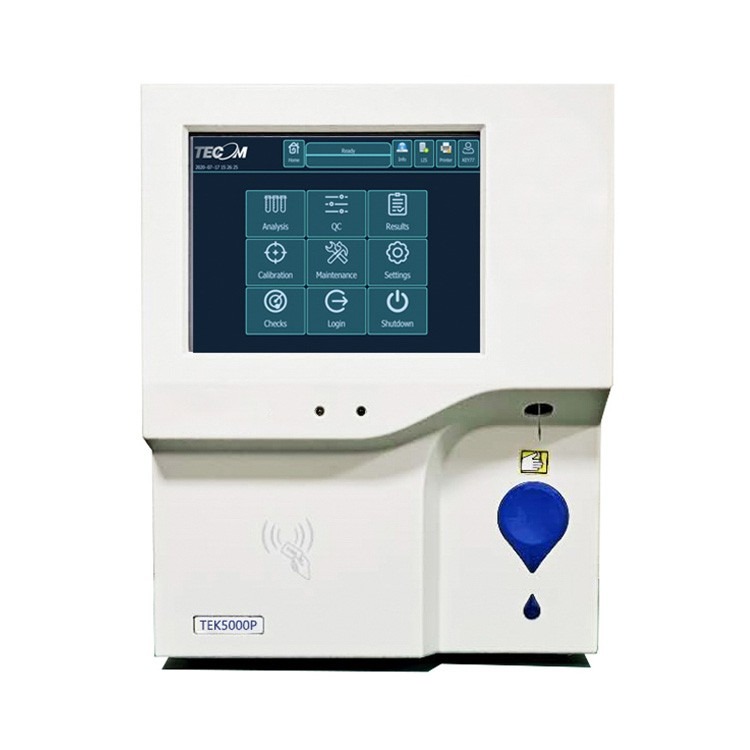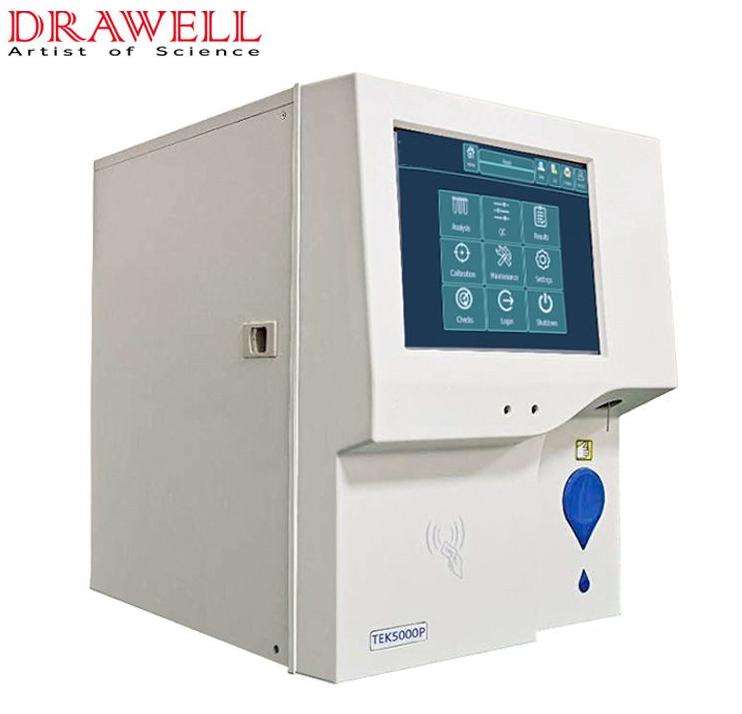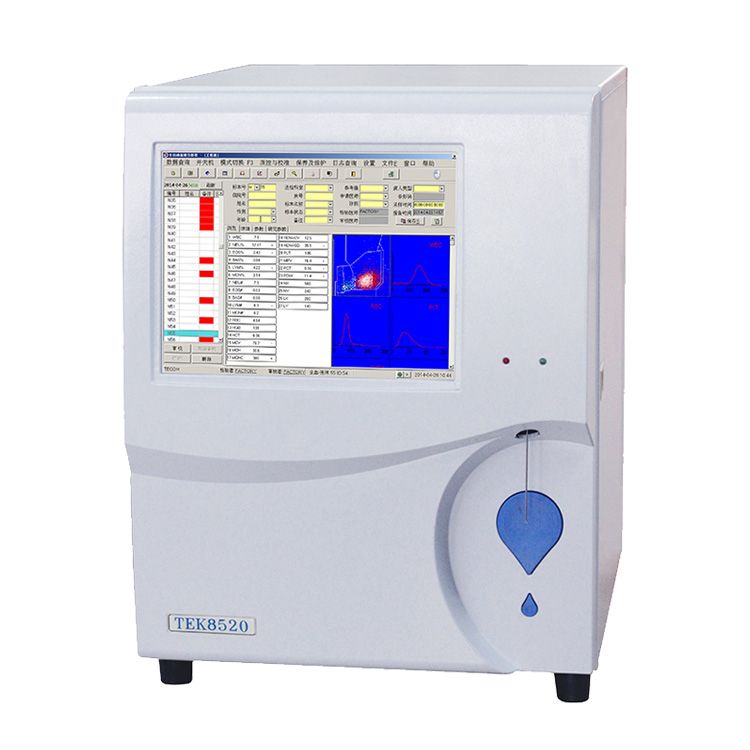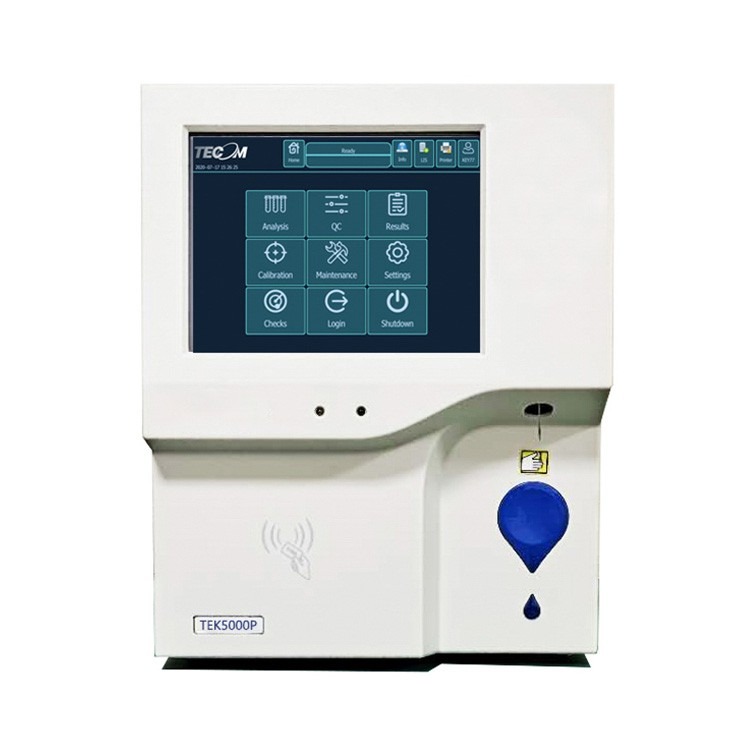Auto hematology analyzers have revolutionized the field of laboratory medicine by providing rapid, accurate, and detailed blood analysis. These sophisticated instruments are essential in diagnosing and monitoring a wide range of medical conditions, from anemia to leukemia. A critical feature of auto hematology analyzer is its ability to perform multi-parameter analysis, which enables comprehensive evaluation of blood samples.

What is Multi-Parameter Analysis in Auto Hematology Analyzer
Multi-parameter analysis refers to the capability of automatic hematology analyzers to concurrently measure multiple blood characteristics from a single sample. This comprehensive assessment includes:
1. Complete Blood Count (CBC)
- Red Blood Cells (RBCs): Total count, hemoglobin concentration, hematocrit, mean corpuscular volume (MCV), mean corpuscular hemoglobin (MCH), and mean corpuscular hemoglobin concentration (MCHC).
- White Blood Cells (WBCs): Total count and differential count (neutrophils, lymphocytes, monocytes, eosinophils, and basophils).
- Platelets: Count and mean platelet volume (MPV).
2. Advanced Parameters
- Reticulocyte Count: Reflects bone marrow activity and erythropoiesis.
- Nucleated Red Blood Cells (NRBCs): Indicates bone marrow activity or response to certain pathological conditions.
- Immature Granulocytes (IGs): Useful in identifying infections, inflammation, and other conditions involving bone marrow activity.
3. Red Cell Distribution Width (RDW)
- RDW-SD and RDW-CV: Measures the variation in red blood cell size or volume, aiding in diagnosing different types of anemia.

Technology Behind Multi-Parameter Analysis in Auto Hematology Analyzer
Auto hematology analyzer uses a range of advanced technologies to perform multi-parameter analysis on blood samples. These technologies enable the precise and rapid measurement of various blood components, essential for accurate diagnosis and monitoring of many medical conditions.
1. Flow Cytometry
Principle
Flow cytometry involves passing cells in a stream of fluid through a laser beam. The cells scatter light in different directions and emit fluorescence when stained with specific dyes.
Applications
- Cell Identification: Differentiates cell types based on size, granularity, and fluorescence.
- WBC Differential Count: Identifies and counts different types of white blood cells (neutrophils, lymphocytes, monocytes, eosinophils, basophils).
- Reticulocyte Counting: Uses fluorescent dyes to stain reticulocytes, allowing their differentiation from mature red blood cells.
Advantages
- High precision and sensitivity.
- Ability to analyze multiple parameters simultaneously.
2. Impedance-Based Cell Counting
Principle
Impedance-based cell counting, also known as the Coulter Principle, measures changes in electrical resistance as cells pass through a small aperture. Each cell causes a change in impedance proportional to its volume.
Applications
- RBC, WBC, and Platelet Counting: Provides counts and size distribution for red blood cells, white blood cells, and platelets.
- Mean Corpuscular Volume (MCV): Measures the average volume of red blood cells.
Advantages
- High accuracy in cell counting.
- Simplicity and reliability.
3. Optical Light Scatter
Principle
Cells are illuminated by a laser or light source, and the scattered light is measured at different angles. The pattern and intensity of scattered light provide information about cell size and internal complexity.
Applications
- WBC Differential Count: Differentiates white blood cells based on size and granularity.
- Platelet Analysis: Measures platelet size and volume distribution.
Advantages
- Detailed analysis of cell morphology.
- High-throughput capability.
4. Cytochemical Staining
Principle
Specific dyes are used to stain cellular components, enhancing the visibility and differentiation of certain cell types under a microscope or flow cytometer.
Applications
- Reticulocyte Identification: Uses supravital dyes like new methylene blue to stain reticulocytes.
- NRBC Detection: Stains nucleated red blood cells, which are otherwise difficult to distinguish from white blood cells.
Advantages
- Enhanced specificity in identifying cell types.
- Ability to target particular cell components or stages of cell development.
5. Laser Light Scatter and Fluorescence
Principle
This hematology analyzer combines laser light scatter and fluorescence to analyze cells. Fluorescent dyes bind to specific cell components, and when excited by the laser, emit light at characteristic wavelengths.
Applications
- Detailed Cell Analysis: Differentiates between various types of cells and sub-populations based on fluorescence intensity and scatter properties.
- Cell Cycle Analysis: Assesses the distribution of cells across different phases of the cell cycle.
Advantages
- High resolution and specificity.
- Multi-parametric analysis in a single run.

6. Radiofrequency (RF) Conductivity
Principle
Measures the conductivity of cells using radiofrequency. This technique assesses the internal complexity of cells, providing additional information about cellular contents.
Applications
- Cell Volume and Internal Structure: Helps in distinguishing cells with similar sizes but different internal compositions, such as differentiating lymphocytes from monocytes.
Advantages
- Provides additional cellular details.
- Complements other measurement techniques for more comprehensive analysis.
Challenges and Future Solutions of Multi-Parameter Analysis in Auto Hematology Analyzer
Here is a chart that outlines the key challenges and future solutions for multi-parameter analysis in auto hematology analyzer.
1. Interference and Artifacts
- Challenge: When analyzing blood samples, the presence of lipids (lipemia) or cell fragments (hemolysis) can skew results, making it difficult to obtain accurate data.
- Solution: Advanced optical systems can differentiate cell types more precisely, while AI algorithms can identify and correct for these interferences, ensuring more reliable results.
2. Standardization Issues
- Challenge: Different hematology analyzers may produce varying results due to discrepancies in calibration and quality control protocols.
- Solution: Establishing global standards and conducting inter-laboratory comparison studies will help harmonize results, making data more consistent across different settings.
3. Limited Differentiation Capability
- Challenge: Distinguishing between closely related cell subtypes, such as different stages of immature cells, remains challenging.
- Solution: Implementing AI and machine learning algorithms can enhance the ability to detect subtle differences between cell types, improving diagnostic accuracy.
4. Sample Integrity and Pre-Analytical Variables
- Challenge: Variations in how samples are collected, stored, and handled can impact the integrity and accuracy of the analysis. Small sample volumes, especially in pediatric cases, add to the complexity.
- Solution: Automated sample processing systems reduce human error, and microfluidic technologies allow for efficient handling of small volumes, preserving sample integrity and enabling comprehensive analysis.
5. Technological Limitations
- Challenge: Enhancing the sensitivity and specificity of analyzers without increasing their complexity and cost is a significant hurdle.
- Solution: Developing multiplexing capabilities that allow for the simultaneous measurement of more parameters from a single sample, along with using new, more sensitive reagents, can improve overall performance.
6. Data Management
- Challenge: The vast amount of data generated by multi-parameter analysis requires robust systems for accurate interpretation and storage.
- Solution: Cloud-based solutions can securely handle large data volumes, and integrating this data with electronic health records provides a comprehensive view of a patient’s health, aiding in better clinical decision-making.
7. Continuous Monitoring and Updates
- Challenge: Maintaining ongoing accuracy and staying updated with the latest technological advancements is essential.
- Solution: Real-time monitoring systems ensure the continuous performance of analyzers, and regular software updates keep the technology current, enhancing diagnostic capabilities.
By addressing these challenges with innovative solutions, auto hematology analyzer can continue to improve in accuracy, efficiency, and overall utility, significantly enhancing patient care and clinical outcomes.
Conclusion
Multi-parameter analysis in auto hematology analyzer is a cornerstone of modern hematology, providing essential data for diagnosing, treating, and monitoring a wide range of medical conditions. These analyzers’ ability to deliver detailed, accurate, and rapid results makes them invaluable in clinical practice.

